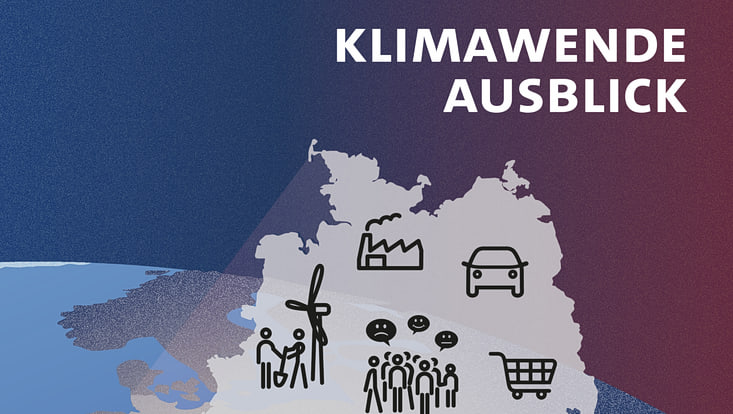and Society (CLICCS)
Fossil CO2 emissions at a record high
5 December 2023, by Ludwig-Maximilians-Universität München / CLICCS

Photo: jplenio/pixabay
- The new report from the Global Carbon Project shows: fossil CO2 emissions will reach a record high in 2023.
- If emissions aren’t reduced, the remaining carbon budget for limiting global warming to 1.5°C will likely be depleted within seven years.
- For the first time, the CO2 forecast for the next year was prepared using Earth system models.
When it comes to reaching the climate targets laid out in the Paris Agreement, time is running out. This can be seen in the annual carbon budget released by the Global Carbon Project (GCP), an international collective of researchers including several German experts, such as Prof. Julia Pongratz and Clemens Schwingshackl from the LMU and Prof. Tatiana Ilyina and Dr. Hongmei Li from Universität Hamburg’s Cluster of Excellence for climate research, CLICCS. According to the report, total fossil CO2 emissions will likely amount to 36.8 billion metric tons in 2023 – a new record and 1.1% higher than the figure from 2022.
The trends varied widely from region to region: whereas fossil emissions rose in India and China (+8.2% and + 4.0%), they declined in Europe and the USA (-7.4% and -3.0%), while declining slightly in the Rest of the World (-0.4%). In terms of Europe, the authors attribute the decline to its expansion of renewable energies and the effects of the energy crisis. The increase in China, they posit, is partly due to its delayed recovery from the effects of the COVID-related lockdowns.
Global CO2 emissions still a far cry from the required levels
When combined with the emissions from land use, global CO2 emissions in 2023 will reach ca. 40.9 billion metric tons – in the authors’ view, a far cry from the levels needed in order to reach the climate goals set in Paris. Although the estimated remaining carbon budget is subject to considerable uncertainty, it’s nevertheless clear that time is quickly running out: if CO2 emissions stay at their current level, the remaining carbon budget for a 50% chance of limiting warming to 1.5°C could be exhausted in seven years, and for 1.7°C in 15 years. “It seems inescapable that we won’t make the 1.5°C target – and in the last few years, we’ve seen dramatic proof of how serious the impacts of climate change already are. The heads of state negotiating in Dubai need to approve far more ambitious emissions reduction measures, so as to at least make the 2°C target,” says Julia Pongratz, Professor for Physical Geography and Land Use Systems at the LMU.
First forecast prepared with climate simulation models
For 2023, the experts estimate that roughly half of the CO2 emitted will be absorbed by the land and ocean sinks; the rest will find its way into the atmosphere, causing its CO2 concentration to rise to an annual average value of ca. 419 ppm (parts per million).
This CO2 estimate for 2023 was for the first time prepared using Earth system models, by a team led by Tatiana Ilyina and Hongmei Li from Universität Hamburg’s Cluster of Excellence for climate research CLICCS. In this approach, the calculations of annual fluctuations in atmospheric CO2 took into account fluctuations in carbon sinks on land and in the ocean – a critical aspect for potential climate futures. “What happens to the CO2 when the emissions suddenly drop? It’s still unclear how sinks on land and in the ocean would react,” says Tatiana Ilyina. “With the aid of the models, we can provide a robust forecast.”
With regard to the land sink, the effects of the weather phenomenon El Niño, which began in mid-2023, can most likely already be felt: at 10.4 billion metric tons, the land sink has absorbed far less CO2 than in previous years, where the average was 12.3 billion metric tons. “In El Niño years, the land sink is less effective, because regions like the Amazon and Southeast Asia are affected by drought and fires,” says Pongratz.
New numbers presented at COP28
The ocean’s response is just the opposite, although the year-on-year fluctuations are less pronounced than on land. After the unusual combination of three consecutive La Niña years (2020 – 2022), in which the ocean sink’s CO2 uptake did not climb, we expect to see an increase to 10.6 billion metric tons in 2023. “In La Niña years, ocean currents in the Equatorial Pacific shift, bringing large masses of carbon-rich deep water to the surface, which means less anthropogenic CO2 can be absorbed,” says Judith Hauck from the Alfred Wegener Institute, Helmholtz Centre for Polar and Marine Research in Bremerhaven, who coordinates estimates on the ocean sink.
The researchers believe the influence of El Niño on the land and ocean sinks will continue to grow in the months to come, ultimately producing a more substantial rise in atmospheric CO2 concentrations in 2024.
The Global Carbon Budget report, which is prepared by an international team of more than 120 scientists, offers an annual, expert-vetted update, one based on proven methods and completely transparent. On December 5th, it was presented at a press conference in connection with the 28th UN Climate Change Conference in Dubai, where representatives of more than 200 countries have gathered to discuss the implementation of the Paris Agreement.
Publication
Friedlingstein et al. (2023): Global Carbon Budget 2023. Earth System Science Data, DOI: https://doi.org/10.5194/essd-15-5301-2023
Contact:
Prof. Dr. Tatiana Ilyina
Universität Hamburg
CLICCS – Exzellenzcluster für Klimaforschung
E-Mail: tatiana.ilyina"AT"uni-hamburg.de
Prof. Dr. Julia Pongratz
Ludwig-Maximilians-Universität München
Tel: +49 (0) 89 / 2180 - 6652
E-Mail: julia.pongratz"AT"lmu.de
Stephanie Janssen
Universität Hamburg
CLICCS – Exzellenzcluster für Klimaforschung
CEN – Centrum für Erdsystemforschung und Nachhaltigkeit
E-Mail: stephanie.janssen"AT"uni-hamburg.de
+49 (0) 40 42838 7596
From the German-speaking countries, researchers from the Alfred Wegener Institute (Bremerhaven), ETH Zürich, GEOMAR Helmholtz Centre for Ocean Research (Kiel), International Institute for Applied Systems Analysis (IIASA), Karlsruhe Institute of Technology, Leibniz Institute for Baltic Sea Research (Warnemünde), Ludwig-Maximilians-Universität (Munich), Max Planck Institute for Meteorology (Hamburg), Max Planck Institute for Biogeochemistry (Jena), Potsdam Institute for Climate Impact Research, University of Bern and Universität Hamburg have participated in the project and contributed ocean observations; model-based simulations of the ocean, land and atmosphere; and analyses to the report.


